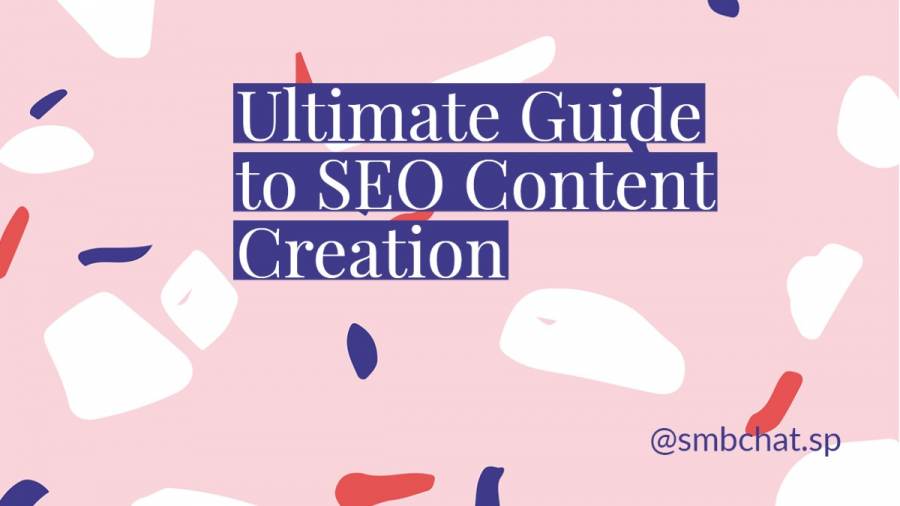Conquer the Climb: How to Get to the Crest of the SEO Mountain, One Copy at a Time
“We really need SEO.”
That’s you. Yep, you probably said that: to your recently-hired SEO copywriters, on calls, just randomly in some heated banters. Search engine optimization seems to be on the collective minds of marketers and brand owners the world over—and for good reason.
- 68% of online experiences begin with a search engine
- The top page listed in a Google search has an average click-through rate of 32%
- 75% of people NEVER scroll past the first page of search engines
- 61% of B2B marketers stated that search engine optimization and organic traffic generate more leads than any other marketing initiative
- 86% of people ignore paid banner ads, choosing to only click on organic search results
- Conversion rates fall by 4.42% for every extra second that it takes your website to load
- Bounce rates increase by 9% if your website takes 2 seconds to load and 38% if your site takes 5 seconds to load
You want to be at the top of Google for any type of content you whip up (doesn’t everyone?). You want clients to find you quickly, fall deep, and kick off a beautiful relationship that’ll last for years to come.
It’s almost become an obsession, so much so that you’ve attempted keyword stuffing 30 times in the last month or so, each time falling harder than the last. At this point, it’s all or nothing. One more filled, bottom-of-the-barrel blog on SEO writing, and you’ll surely lose it.
Fortunately, today is more than your lucky day. Mark it somewhere in your calendar because today is the day you learn the ABCs of SEO content writing—literally.
Let’s First Dispel the Rumors: Is SEO Really Dead?
Short answer: No.
Long answer: Heck no! While many people believe that SEO is dead (enough that 210 people search for that exact phrase every month), the reality is that SEO is very much ALIVE, and the stats out there prove it. It’s the mechanics that’ve changed.
Sure, Bert, Penguin, and Hummingbird have made it incredibly difficult to cheat the system. However, each of these algorithm updates has moved SEO content writing from a manipulative marketing practice to an art form that combines the intricacies of content creation, search intents, branding, IT, and content promotion to drive highly-qualified visitors to your website. And that’s just putting it mildly.
In other words, it’s organic, socially-shared content that’s reaching the sanctified summit of Google’s search results, not over-optimized tricked out pages.
SEO Content Writing Like It’s Supposed to Be: The Intricacies of Creating Stellar Content (6 Actionable Tips to Fuel Your Quest to Ranking Stardom)
We’ll put it out there in black and white: the new SEO is impeccable, original content.
Google wants to show its users sites that they’ll respect, take interest in, and find relevant to their search queries. So if you’re not creating amazing content that people can share, discuss, and rev about, you’re pretty much spitting in the ocean.
Let’s change that right now. Shall we?
1. Bigger is Better, But not a Magic Number
There’s plenty of interesting research out there showing that long copy can perform, convert, and ultimately rank better than a shorter piece of content. Our advice? Take these findings with a pinch of salt.
Length doesn’t automatically equal value. Just see Seth Godin’s wildly successful blogs—as short as they are, they are a wholesome food for thought, especially if you’re trying to become a thought leader in your niche.
While longer content gives Google more concepts to index, earns more links, and can become a definite resource on a niche topic, shorter content doesn’t fall far behind.
In fact, concise content can be much more compelling than a long-winded diatribe, particularly for landing pages. Far more important than your page’s word-count is its style, substance, and social shareability (as we’ll find out a little later).
Actionable tips (ideal length for various types of content):
- Product page or description >200 words
- Taxonomy page >250 words
- Landing page >300 words
- Blog post >2,100 words (stick to within the 2,400-word margin)
2. Think like Your Target Audience
Audience first.
Are you tired of hearing this age old mantra? I am.
But here’s the thing: Too many marketers say and even think they’re all about the audience, but when you dig into their content marketing and SEO content strategy, you see it’s all about them. Shucks!
It’s 2022, folks, not 1970’s. In this day and age, content that fails to put its target audience front and center faces one fate and one fate only: it finds itself on page 101 of Google. Worse still, it gets zero eyeballs (read that: z-e-r-o).
To that end, think about who you want to be discovered by, then put yourself in their shoes. If you’re a restaurant, you want to entice hungry customers nearby. If you’re a law firm, you want to reach prospective clients with legal needs and questions about the law. When those audiences key in “best burger in Los Angeles, California” on Google, or search a specific legal question, an SEO-driven campaign can put you on the first page of their results. It’s that simple, really.
Actionable tips
To think like your audience, ask yourself:
- What are they looking for? Are they searching for a good, a service, or an answer to a specific question? By smartly anticipating their needs, you can create content that satisfies them—or at the very least, piques their interest.
- What are their priorities? Maybe it’s a focus on quality, cost effectiveness, or something entirely different. Think about what your prospective customers want, and add related primary keywords to your SEO content. For instance, the keyword “affordable” can go a long way with a cost-conscious audience.
- What can you do for them—and how do they see this benefit? Ultimately, potential customers are drawn to your company because it benefits them in some capacity. You know this benefit, and your target audience does too; but you might see it differently. Put yourself in your audience’s shoes and carefully consider their wants, pain points, and desires. From there, brainstorm relevant keywords and make buckets to organize your SEO content.
3. Learn the Subtle Art of Picking the Right Keywords
Speaking of keywords…
They might be—dare I say?—the best thing to have happened to content marketers since sliced bread. But that’s beside the point.
Some site owners play fast and loose with keyword research for natural search engine rankings. They shirk proper analysis and selection, or merely take wild stabs at whether a keyword phrase is worth pursuing in the first place.
If you’re that marketer, it’s time for a course correction. Seriously.
Actionable tips
- Make a list of important, relevant topics based on what you know about your business
- Fill in those topic buckets with focus keywords (the best keywords are those that are highly relevant, authoritative, and low-volume)
- Understand how search intent affects keyword research and analyze accordingly (this one is a major factor in the SEO realm!)
- Dial in on related search terms
- Use keyword research tools to your advantage—popular ones include Ahrefs, SEMrush, and Ubersuggest.
- When it’s all done and dusted, add those exact keywords strategically in your title tags, meta descriptions, introductions, last paragraphs, and throughout your pieces of content where possible
Allow me to be a bit biased here. If you’re looking to generate more keyword ideas, look no further than Ubbersuggest. From head phrases to long-tail keywords, this free tool gives you hundreds of suggestions on the go. You’ll also see volume, the competition, and even seasonal trends for each target keyword. Isn’t that awesome?
Source: Ubersuggest
4. Quality, Not Quantity
The idea of “quality” can seem somewhat nebulous, meaning different things to different people. However, when it comes to the ranking algorithms used by Google—the answer is pretty much unequivocal; high-quality content is:
- Comprehensive
- Useful
- Helpful
- Educational
- Accurate
- The best answer to a searcher’s query
Make no mistake about it. High-quality, original content ranks, and it’s so important a ranking factor that it can single-handedly push your site to the crest of SERPs. No cap.
Actionable tips
- Format your blog articles like your life depended on it—readability is king. People don’t respond to giant blocks of text, and neither does Google. Break ‘em down! Use a conversational tone and bulleted lists as often as you possibly can.
- See what’s trending and create a backlog of (relevant) content ideas
- Do thorough research to maintain trust and credibility— customer trust in media and institutions is at all-time low, according to this Edelman Trust Barometer.
- Capitalize on your experiences, studies, and data. Nothing sells more than statistics and analyses fresh off the kitchen.
- Target a niche subtopic, and make it your playground
- Recycle old content without actually recycling it—in other words, add your own unique perspective
Here’s how Mark Twain put it:
Source: Goodreads
5. Capture Local Searches
That beautiful local blog you read last night about an upcoming music concert had a journey that started way back. It’s not by chance or by fluke that it’s high-ranking compelling content; it’s been a long time coming.
There was a well-documented SEO strategy and a lot of optimization steps before the final refined blog landed on your screen.
People sat down somewhere, took time, brainstormed, and came up with a piece of SEO content that had you in mind. In other words, they took local SEO seriously—and you should too (if you haven’t already).
Nearly half of all Google searches are for local information: store hours, local addresses, or more specific inquiries. If your business has strong local ties, flexing them with SEO-optimized content could be a smart strategy for strengthening your local reach and sales.
Actionable tips
- Build juicy, nuggets-oozing, super informative web pages
- Associate your products/services with your locale in your blog posts
- Leverage local events
- Feature local subject matter beyond your business
- Amplify your blog content via social media
- Participate in your community, and make sure your content recaps these activities
6. Take Link-Building Seriously
Picture this.
You created the best content this side of SEO writing, conducted epic buyer research, and hired the best SEO copywriters money can buy. Above that, you created a kickass SEO content strategy that documents your entire process from start to finish.
But there’s one big problem: your site is still ranking low on SERPs. At best, it ranks on page 55, and that’s not to mention the many times it didn’t rank at all. (Hello darkness my ol’ friend).
How can you turn this around?
One word: link-building.
Thing is, search engine algorithms discover new content through links—and it’s also, in part, how they judge the quality of that content.
Good external links and internal links are like votes; they are testimonials to how worthwhile your content is, and Google sees a healthy link profile as a good sign.
For links to help your SEO content, those links should be:
- Helpful
- High quality
- Natural
And that’s just the start.
Actionable tips
- Spy on your competitors’ backlinks and do your due diligence
- Don’t buy links—focus on creating high-quality content instead
- Make the most of reciprocal linking—where two brands exchange links for the overall good of their SEO
- Whip up one guest post after another—remember, it’s the end-game that counts
- Craft unique case studies
- Reel in on the power of infographics
All said and done, remember that backlinks are arguably the #1 ranking factor, up there with likes of high-quality content and user experience (RackBrain). In fact, 58% of SEO experts say backlinks have a big impact search engine rankings. Ignore link-building at your own peril.
Now folks, for the last time: what’s the secret of good SEO content writing? That’s more like it—high quality copy.
All Rise—Zoey is Here to Take You to the Summit of SERPs Rankings
It sounds like a lot of work. And it is. But we probably don’t need to tell you how important it is for your business to be found in search—and when it comes to writing content that ranks, we can help.
Partnering with a content marketing agency takes the pressure off of your team to generate high-quality content that (eventually) turns readers into customers. At Zoey Writers, our SEO content writers specialize in taking a deep dive into your business and your niche to find out what will resonate most with your target audience—and catch Google’s attention at the same time.
Do we weave in primary keywords and all? Sure. But using a SEO writer at Zoey to do only that is like hiring a Harvard PhD graduate to teach your three-year old how to add.
Check out our SEO writing services to learn how we can get your brand noticed, for good. To craft SEO content that stands out, get in touch.
Photo by Merakist on Unsplash. Thanks, Merakist!

















